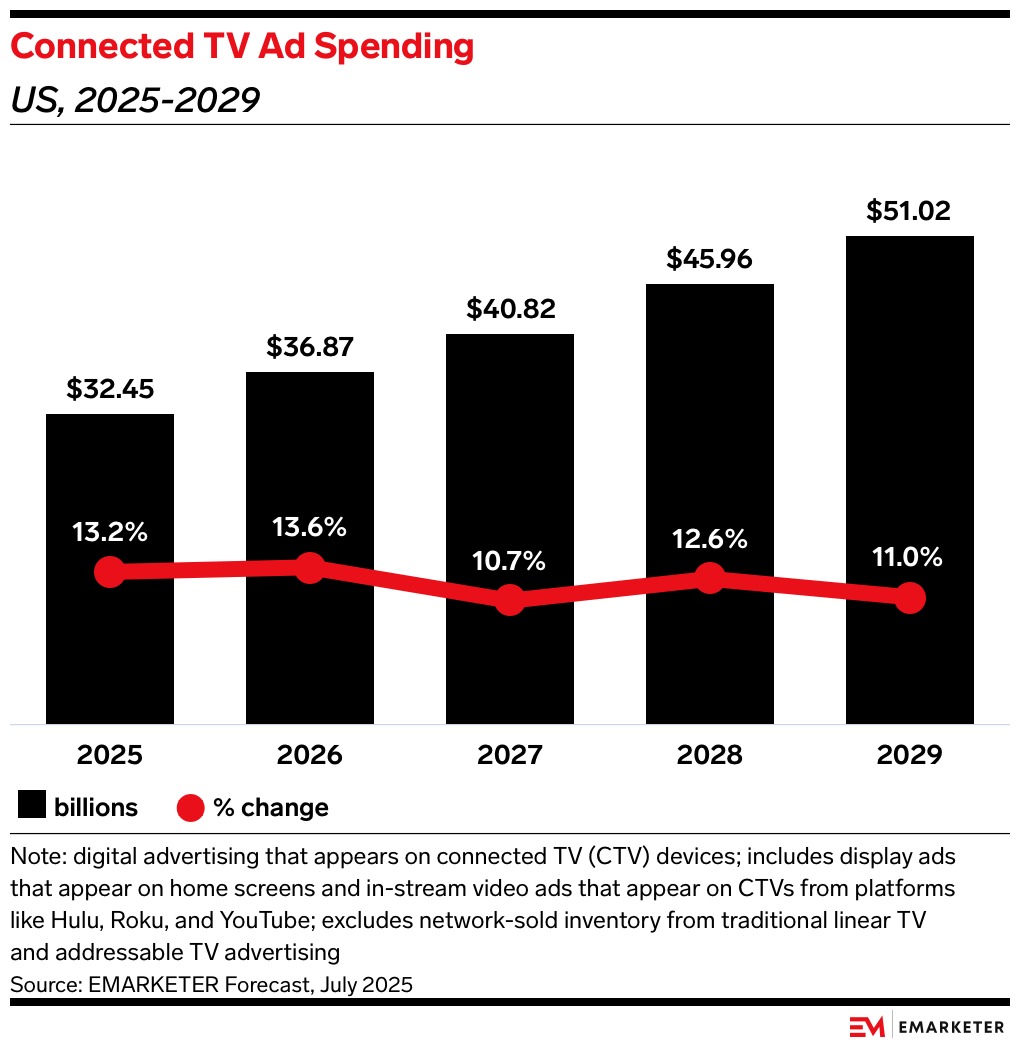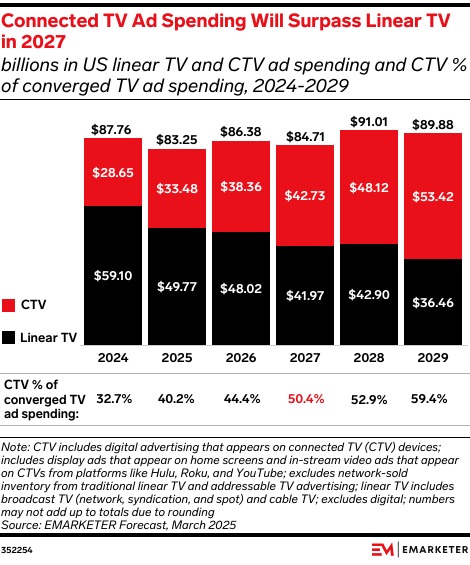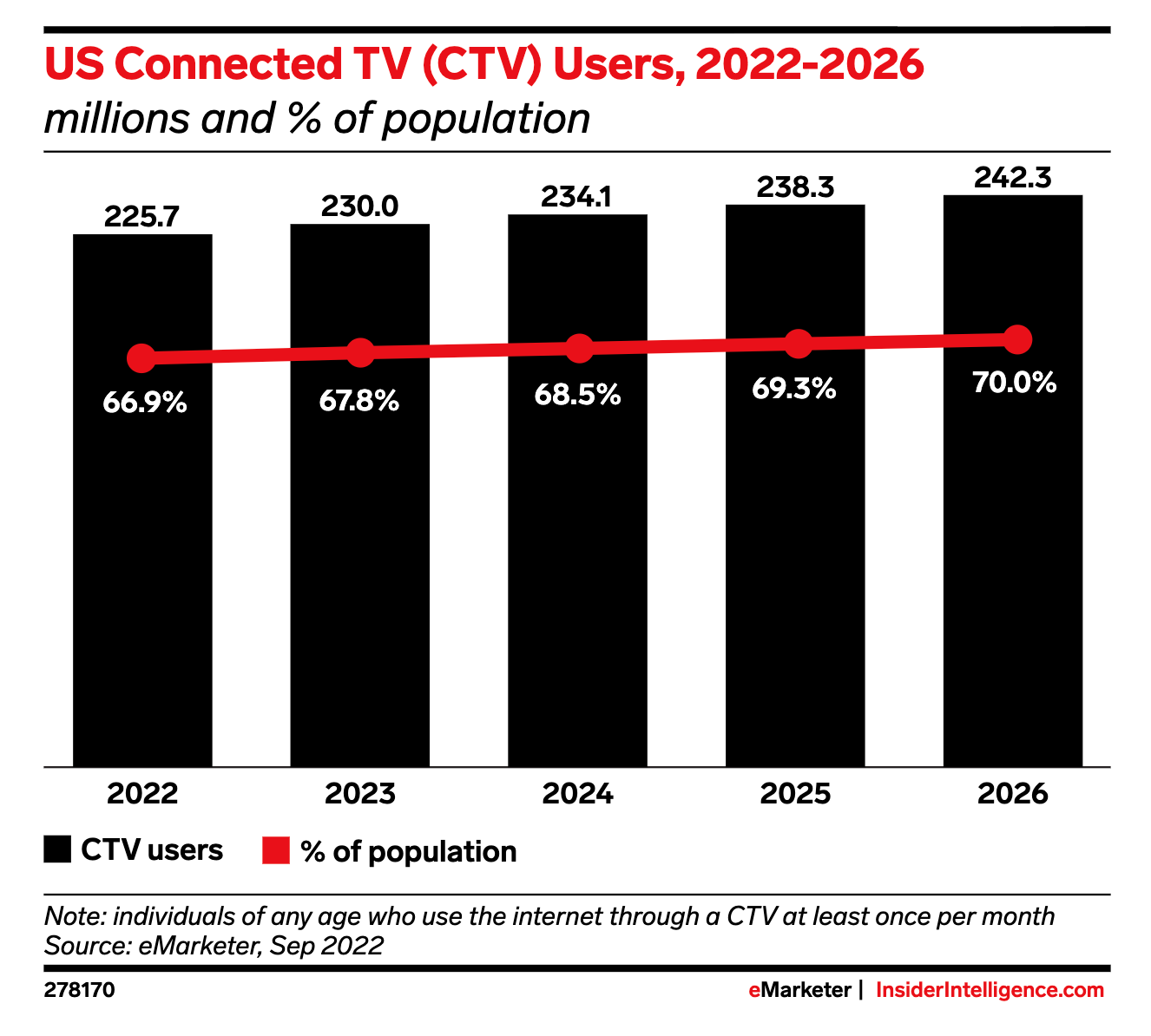In the last several years, Connected TV has exploded in popularity. Once dominated by just Netflix and Hulu, the pandemic years saw the channel grow into a multi-billion-dollar behemoth where upstarts and legacy media alike battled for subscribers and supremacy. Today, the average US viewer subscribes to at least seven different streaming services, an increase from five just a year ago, and Connected TV advertising is projected to exceed 40% of global ad spending by 2030 (compared to linear TV’s current share dropping to just 12%). From the latest movies to the hottest shows to live sports, streaming is where viewers and advertisers alike get in on the action today.

There’s no doubt about it: streaming is no longer a nascent ad channel, and it’s changing how viewers, advertisers, and media companies view content distribution. But if you haven’t joined the streaming revolution, you haven’t missed the boat. In fact, now that the dust has settled, growing pains have been navigated, and the channel has proven its worth, it might be the best time to explore Connected TV advertising.
What Is Connected TV Advertising?
Connected TV, often shortened to CTV, refers to any television that connects to the internet and allows viewers to stream video content through apps and platforms. These can include paid services like Netflix, Hulu, and Peacock, or FAST (Free Ad-Supported Television) channels like FreeVee, Crackle, or Pluto that don’t require any subscription costs. The Connected TV category also includes the devices these services air on: smart TVs as well as traditional TVs paired with devices like Roku, Amazon Fire TV Stick, or gaming consoles. What sets Connected TV apart from traditional “linear” TV is its flexibility—viewers can watch what they want, when they want, without relying on a preset broadcast schedule.

For advertisers, Connected TV opens new doors that linear TV simply can’t match. It combines the storytelling power and visual impact of television with the precision and measurability of digital advertising. Think of it as “digital marketing’s smarts combined with TV’s good looks.” Marketers can target audiences based on demographics, interests, behaviors, and even first-party data, ensuring that ads reach the right households. Moreover, Connected TV advertising offers detailed performance metrics, such as impressions, completion rates, and conversions, allowing brands to track and optimize their ad spend in real time. All while offering the powerful audio-visual storytelling that has inspired, entertained, and educated countless TV audiences for generations.
Perfecting Connected TV Advertising
Running a successful Connected TV campaign requires both creative and strategic alignment. First, it’s essential to design ad creatives that feel native to the streaming experience. These would be videos that are short, visually compelling, and tailored for an audience that’s actively choosing their content. Ads should capture attention within the first few seconds and communicate a clear message or call to action before viewers can skip or move on. Keeping the website URL or QR code in clear view throughout the ad is also beneficial, as well as audibly saying the brand’s name out loud for audiences who have the TV running in the background.
Targeting precision is one of Connected TV’s strongest assets, but with that power comes the need for balance. Overly narrow audience segments can limit reach, while overly broad ones can waste impressions. The goal is to use Connected TV’s strengths to get the right ad to the right person at the right time. A data-driven approach that combines audience insights with ongoing testing helps advertisers find the right mix; the best marketers will continually test and optimize this approach for every campaign. Finally, measurement and attribution are key: track not only view-through metrics but also post-view actions, such as website visits or app installs, to understand Connected TV advertising’s true contribution to your marketing funnel.
How Connected TV Complements Other Channels
So Connected TV combines the best of digital marketing with linear TV. Sounds like you should cut the cord and shift over your entire social budget, right? Far from it. Connected TV doesn’t exist in isolation; it’s a powerful amplifier for your broader omnichannel marketing strategy. When paired with digital channels such as social media, display, or search, Connected TV reinforces brand messaging across touchpoints and strengthens recall. For instance, a viewer who sees your Connected TV ad may later search for your brand online or engage with a retargeted display ad, creating a cohesive and consistent brand experience.

Connected TV also bridges the gap between traditional TV awareness and digital performance marketing. Brands can use Connected TV to generate top-of-funnel engagement and then retarget those same audiences through mobile or desktop ads to drive conversions. This cross-channel synergy helps advertisers maintain continuity throughout the customer journey, meeting people where they are, on the screens they use most. Instead of thinking of Connected TV as a new competing ad channel, think of it as a complementary one: it’s a third powerful rail that exists alongside linear and your digital marketing efforts.
Conclusion
Connected TV is reshaping how audiences consume content and how brands reach them. Its combination of premium video storytelling, precise targeting, and measurable results gives marketers the best of both television and digital worlds. By following best practices and integrating Connected TV advertising into a multi-channel strategy, brands can build more effective, data-driven campaigns that connect with audiences in meaningful ways.
In a world where viewing habits continue to evolve, marketing budgets are under higher scrutiny, and advertisers are expected to hold every ad dollar accountable, Connected TV isn’t just the future of television: it’s a crucial part of advertising’s future, too.
Ready to start Connected TV advertising? Partner with Blue Wheel for your strategy and creative needs.
FAQs
What is Connected TV (CTV)?
CTV is any internet-connected TV that streams video content via apps (e.g., Netflix, Hulu, FreeVee) or devices (e.g., smart TVs, Roku, gaming consoles).
How does CTV differ from traditional "linear" TV?
CTV offers on-demand viewing, unlike linear TV's fixed broadcast schedule.
What are the benefits of CTV advertising for brands?
It combines TV's visual impact with digital advertising's precision and measurability, allowing targeted ads and real-time performance tracking.
What are the best practices for a successful CTV advertising campaign?
Focus on engaging video creatives, precise data-driven targeting, and comprehensive measurement of both view-through and post-view actions.
How does CTV complement other marketing channels?
CTV enhances omnichannel strategies by reinforcing brand messaging across platforms and driving conversions through cross-channel retargeting.







.png)
.png)
.avif)